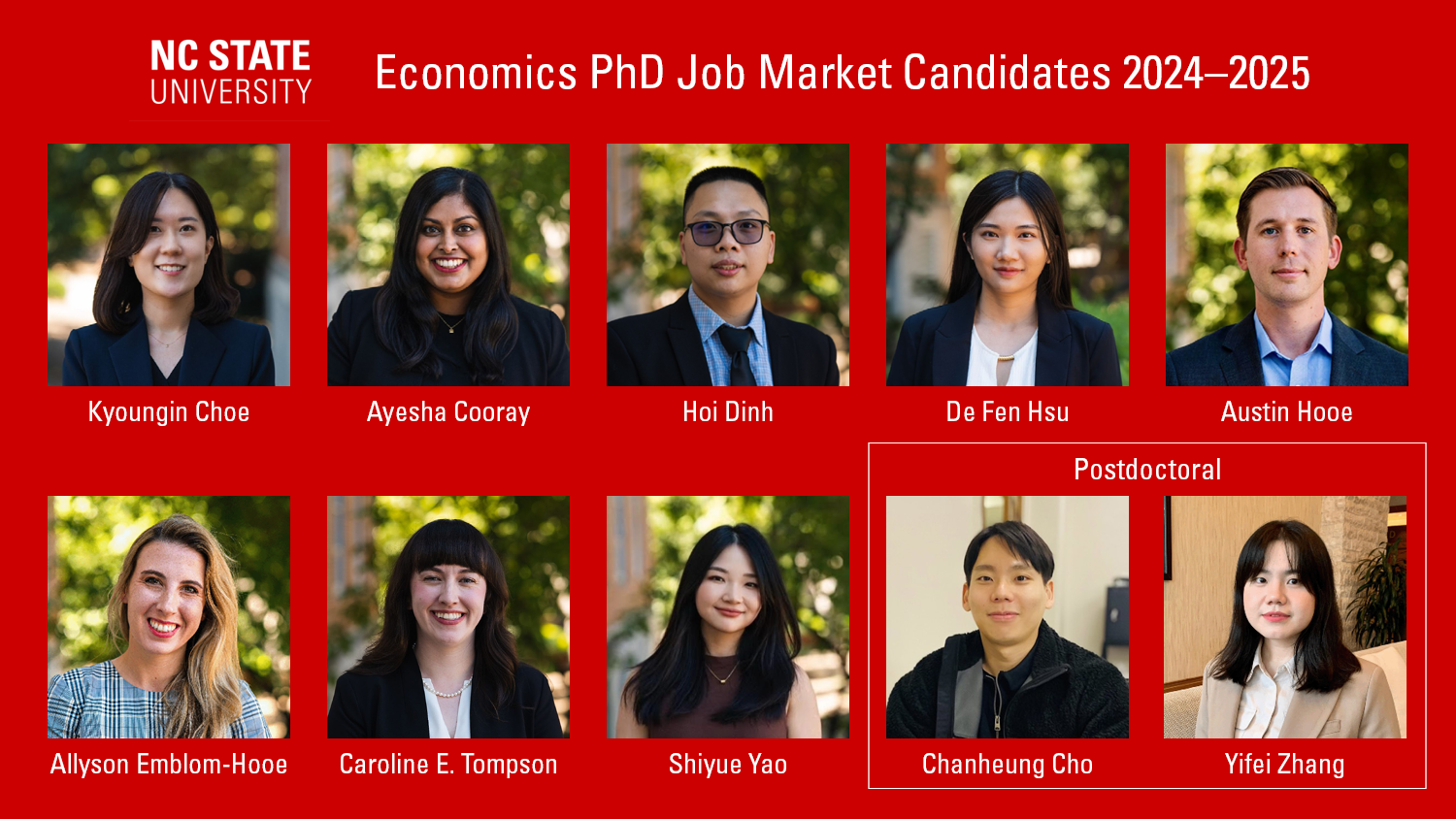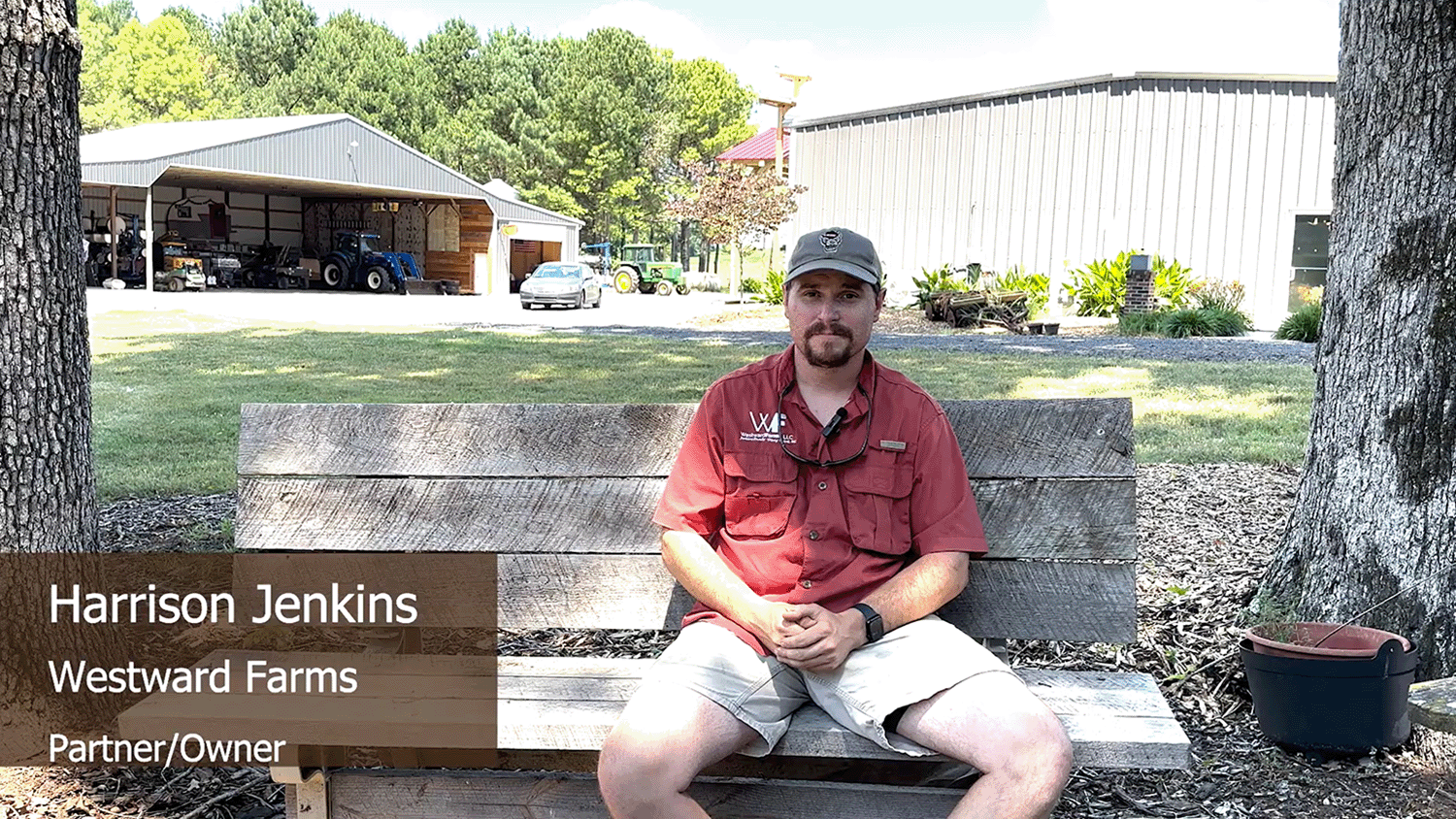Student Spotlight: Shu Meng

Shu Meng won the CALS award for Best TA in Spring 2021. Receiving such an impressive award, especially during a global pandemic, demonstrates how Shu Meng has committed herself to a thoughtful teaching philosophy based on 4 principles, which she explains in a Q&A below.
What brought you to NC State?
I am interested in agricultural economics and our PhD program is one of the best in the world.
Do you have a teaching mentor?
Although I do not have a specific teaching mentor, I did learn a lot from Dr. Hyman. I had been Dr. Hyman’s TA for one year before I became an independent instructor, and that experience was a great training session for me. I attended all his lectures and he impressed me with his knowledge, enthusiasm and engaging coursework, which are also the features I would like to possess as an instructor.
What is your teaching philosophy and what do you teach?
Being an independent instructor of EC205 Fundamentals of Economics for four semesters, I believe it is worth devoting time to teaching and I have also learned a lot from teaching. Compared to telling students what they need to learn, I prefer to tell them why they need to learn the content. When I was an undergraduate student, what I expected was to know how what I learned in class was related to the real world and how that information was connected to each other. Because of my own experiences, I added real-world examples and concept maps to my lectures. Other than that, I found out real-time practice in class and availability outside of classroom are also important in encouraging students to study.
Therefore, I value the following principles in my teaching experience and these ideas will continue to guide me in the future.
1. Real-world examples: Real world examples are important. Besides the real-world examples from textbooks, I also give examples that may happen every day for students to learn the concepts more clearly. For example, as students may have questions on how marginal benefits are obtained, I ask them to give a price for one Twix bar if they do not have breakfast and they are very hungry. Then how much they would like to pay for the second one and then the third one. As a result, they know how to obtain the marginal benefit and understand what willingness and ability to pay means.
2. Concept maps: Understanding concepts is the most important thing. If students cannot be clear with the large ideas and themes of economics, it would be hard to dig deeper into economics or any other subjects. I usually build a concept map for my student in order to give them the framework of what this course is about, where concept maps are used to represent the relational structure of conceptual knowledge. Instead of listing all the concepts, I prefer to showing them how those concepts are related to each other and logically why we need these concepts to do economic analysis. For example, we introduce marginal analysis in the first chapter, then do the demand and supply analysis, and then maximize the profits of firms using the rule that marginal cost is equal to marginal revenue. To make things connected, I tell my students how marginal benefit is related to demand and how marginal cost is related to supply, and the rule that marginal cost equals marginal revenue stems logically from the marginal analysis. I strive to help them learn the concept and understand it, once they understand it, they never forget.
3. Real-time practice: I use polleverywhere.com to set up an environment where students can do the real-time practice together, which is more efficient than distributing problem worksheets and waiting for them to complete all the questions. I also like to ask students to answer questions, which is a good chance for them to explain their thoughts to the class and to test whether they have really grasped what they have learned. Whether the answer is correct or not, we could learn from it. If the answer is correct, the student may view the questions from other perspectives which are different from mine, and they can use their own words to explain the concepts. If the answer is not correct, we can figure out what the reasons that students may be misguided or misled are.
4. Availability inside and outside of the classroom: It is very important to me that my students know that their questions and comments are valued both inside and outside of the classroom. This starts with being approachable, memorizing students’ names, actively soliciting questions throughout the lecture, and responding to emails quickly. I also stay for a few minutes after each lecture to answer some remaining questions. Some students are reticent to speak up during lectures, especially in a large classroom setting. Therefore, I strive to give them more chances to ask questions and to make them not feel isolated, especially during the pandemic period. I have enjoyed my teaching experiences, and I am looking forward to continuing to improve as an instructor in the university. I obtained several compliments and suggestions in the evaluation from my student and their enthusiasm for economics helps me remain passionate about teaching.
What research areas do you find interesting and worth pursuing in your graduate career?
I find market linkages in agricultural economics are really interesting.
What are your goals for your time at NC State and after graduation?
I would like to complete a good research project with the support of my professors and my colleagues at NC State and it would be great if I could do some work that is related to the research of agricultural market linkages after graduation.
- Categories:


